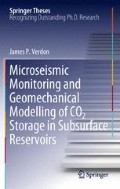Abstract
In 1903, A.R. Wallace (Charles Darwin’s co-discoverer of evolution) identified that the coal smog and pollution produced by large industrialised cities represented a grave threat to the health of the inhabitants. On the inside cover of this thesis I have reprinted his exhortation for political leadership to do something about it. Our response as a society was such that, 100 years later, air pollution is no longer a major problem in most modern cities (although it remains a problem in less developed nations lacking the technology to deal with it). His exhortation is still equally relevant today, however, because humanity now faces a new threat, still related to the burning of coal which Wallace railed against over a century ago. This threat is not limited to the inhabitants of one smoggy city, but could well affect all life, human and not, on the planet.
A technology push approach, based on large-scale research and technology deployment programmes and new breakthrough technologies, is needed to achieve deeper GHG cuts in the long run (2050 and beyond). Global Environmental Outlook 4 United Nations Environment Programme
Access this chapter
Tax calculation will be finalised at checkout
Purchases are for personal use only
References
De Meersman K, van der Baan M, Kendall J-M (2006) Signal extraction and automated polarization analysis of multicomponent array data. Bull Seismol Soc Am 96(6):2415–2430
Dean RH, Gai X, Stone CM, Minkoff SE (2003) A comparison of techniques for coupling porous flow and geomechanics. Proceedings of the 17th SPE reservoir simulation symposium, SPE 79709
Holloway S (2001) Storage of fossil fuel-derived carbon dioxide beneath the surface of the earth. Annu Rev Eng Environ 26:145–166
IEA Energy Technology Perspectives 2008. 650 pages, ISBN 978-92-64-04142-4
Johnson JW, Nitao JJ, Steefel CI, Knauss KG (2001) Reactive transport modelling of geologic \(\hbox{CO}_{2}\) sequestration in saline aquifers: The influence of intraaquifer shales and the relative effectiveness of structural, solubility, and mineral trapping during prograde and retrograde sequestration. NETL Proceedings, First National Conference on Carbon Sequestration.
Jones RH, Stewart RC (1997) A method for determining significant structures in a cloud of earthquakes. J Geophys Res 102:8245–8254
Minkoff SE, Stone CM, Bryant S, Peszynska M (2004) Coupled geomechanics and flow simulation for time-lapse seismic modeling. Geophysics 61(1):200–211
Rutledge JT, Phillips WS, Mayerhofer MJ (2004) Faulting induced by forced fluid injection and fluid flow forced by faulting: an interpretation of hydraulic fracture microseismicity, Carthage Cotton Valley Gas Field, Texas. Bull Seismol Soc Am 94(5):1817–1830
Torvanger A, Kallbekken S, Rypdal K (2004) Prerequisites for geological carbon storage as a climate policy option. CICERO Report 2004:04
Teanby NA, Kendall J-M, Jones RH, Barkved O (2004a) Stress-induced temporal variations in seismic anisotropy observed in microseismic data. Geophys J Int 156:459–466
Author information
Authors and Affiliations
Corresponding author
Rights and permissions
Copyright information
© 2012 Springer Verlag-Berlin Heidelberg
About this chapter
Cite this chapter
Verdon, J.P. (2012). Introduction. In: Microseismic Monitoring and Geomechanical Modelling of CO2 Storage in Subsurface Reservoirs. Springer Theses. Springer, Berlin, Heidelberg. https://doi.org/10.1007/978-3-642-25388-1_1
Download citation
DOI: https://doi.org/10.1007/978-3-642-25388-1_1
Published:
Publisher Name: Springer, Berlin, Heidelberg
Print ISBN: 978-3-642-25387-4
Online ISBN: 978-3-642-25388-1
eBook Packages: Earth and Environmental ScienceEarth and Environmental Science (R0)

